Some homeowners may not be aware that their household plumbing systems consist of more than a collection of pipes. For example, there are also fixtures, hoses, and especially rubber gaskets that play an important role in the proper functioning of the entire plumbing system. Some of the most common insurance claims for homeowners in need of such repairs involve leaks, cracked seals or rotted gaskets.
Tips To Prevent Cracked Seals And Dry Rot
Gaskets are important in creating an airtight seal for fixtures and therefore preventing leaks. Unfortunately, if they are not used on a regular basis, such parts can experience dry rot and eventually crack. Making sure that water runs through all the pipes in the home on a regular basis is a good way to prevent gaskets and seals from rotting. If the home features a bathroom that is primarily used when guests are visiting or an extra sink is installed in the basement that is only used occasionally, water should be allowed to run through these spigots for a few moments every other day to ensure that the gaskets stay lubricated. Similarly, turning the water off when going away on vacation is not recommended. Although it may prevent flooding if a major leak occurs when you are away, the odds of that happening are far less than the odds of the beginning of dry rot while you are traveling. Once dry rot has begun, it is difficult to reverse. Having a plumber inspect the system before you leave is a better way to prevent problems while you are out of town.Leaks
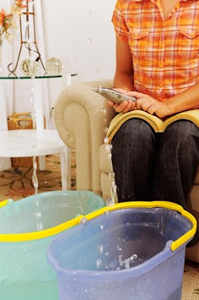 Plumbing leaks that occur without your knowledge can lead to serious problems if not discovered in a timely manner. For example, a small leak concealed somewhere in the walls of your home can eventually harm the structural integrity of the dwelling, and promote the growth of mildew. Similarly, a sudden leak that occurs can flood the house and subsequently destroy appliances and furniture. In fact, this is a very common reason for turning in a claim on a homeowner's insurance policy. Statistically speaking, most major water damage occurs due to weather, rather than leaking or failing plumbing systems. However, the damage can be very similar, regardless of the underlying source. One of the best ways to discover leaks in their early stages is to keep a close eye on your water bill. Unusually high water bills, or even bills that have gone up a little when there is no obvious reason for the increase, should be regarded as a red flag.
Plumbing leaks that occur without your knowledge can lead to serious problems if not discovered in a timely manner. For example, a small leak concealed somewhere in the walls of your home can eventually harm the structural integrity of the dwelling, and promote the growth of mildew. Similarly, a sudden leak that occurs can flood the house and subsequently destroy appliances and furniture. In fact, this is a very common reason for turning in a claim on a homeowner's insurance policy. Statistically speaking, most major water damage occurs due to weather, rather than leaking or failing plumbing systems. However, the damage can be very similar, regardless of the underlying source. One of the best ways to discover leaks in their early stages is to keep a close eye on your water bill. Unusually high water bills, or even bills that have gone up a little when there is no obvious reason for the increase, should be regarded as a red flag. Doing Your Part To Ensure A Claim Is Paid
It is important to follow the tips outlined above to do your part in discovering leaks and dry rot before they cause serious problems: although coverage varies from one homeowner's policy to the next, most policies feature what is referred to as a "maintenance clause," which is in place to ensure that the homeowner does his or her part to repair items such as leaky toilets or faucets prior to them causing significant damage and the filing of an insurance claim. Fortunately, most plumbing problems can be remedied quickly if they are caught in the early stages. Therefore, keeping an eye on gaskets, fixtures and closely watching your water bill will ensure such occurrences are kept to a minimum.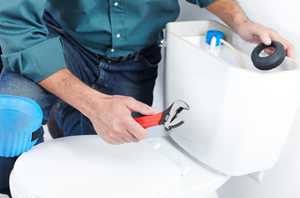 If you need a professional plumbing inspection, it is important that you schedule one before a small problem might become a bigger one and an insurance claim might have to be filed. For a professional plumber in your area, Robinson Plumbing can assist you with any plumbing questions that you might have as well as address any of your plumbing needs. Robinson Plumbing is a local, family owned company that is known for trusted, quality service. Call us today at (610) 351-9889 or contact us for any questions that you might have!
If you need a professional plumbing inspection, it is important that you schedule one before a small problem might become a bigger one and an insurance claim might have to be filed. For a professional plumber in your area, Robinson Plumbing can assist you with any plumbing questions that you might have as well as address any of your plumbing needs. Robinson Plumbing is a local, family owned company that is known for trusted, quality service. Call us today at (610) 351-9889 or contact us for any questions that you might have! Similar articles can be found at: Robinson Plumbing Blog
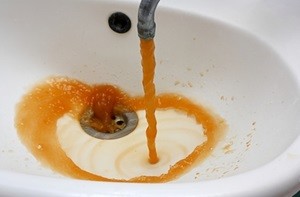 In most cases, orange, red or yellow water indicates the presence of rust. Although rust does not typically cause major health issues, it is certainly not pleasant to the taste and can discolor clothing and linens. Rust may also turn water brown. When this occurs, it typically has an accompanying smell that is unmistakable. A faulty hot water tank can lead to a buildup of rust and a brownish tint to water. Causes of rusty water are typically either old pipes in your home that are failing or rust in the water main at your municipal water source. Typically, if the color changes quickly, it is a city water main issue. Most municipalities do an annual flush of water mains to eliminate sediment and if this is the case, the problem will disappear on its own. If it does not go away within a few days, the issue likely stems from pipes in your own home. If you only notice the brown discoloration when you are running hot water, it is probably due to a faulty hot water tank. Brown water may also be the result of too much manganese or iron in your water supply. When contaminated with either or both of these metals, the water may stain clothing and linens, but is still generally safe to drink, even if it does feature an odd taste.
In most cases, orange, red or yellow water indicates the presence of rust. Although rust does not typically cause major health issues, it is certainly not pleasant to the taste and can discolor clothing and linens. Rust may also turn water brown. When this occurs, it typically has an accompanying smell that is unmistakable. A faulty hot water tank can lead to a buildup of rust and a brownish tint to water. Causes of rusty water are typically either old pipes in your home that are failing or rust in the water main at your municipal water source. Typically, if the color changes quickly, it is a city water main issue. Most municipalities do an annual flush of water mains to eliminate sediment and if this is the case, the problem will disappear on its own. If it does not go away within a few days, the issue likely stems from pipes in your own home. If you only notice the brown discoloration when you are running hot water, it is probably due to a faulty hot water tank. Brown water may also be the result of too much manganese or iron in your water supply. When contaminated with either or both of these metals, the water may stain clothing and linens, but is still generally safe to drink, even if it does feature an odd taste. 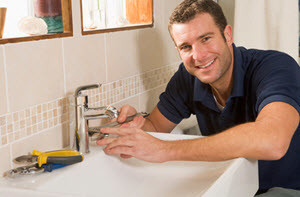 It is always wise to seek professional evaluation if you suspect that any type of contaminant has made its way into your tap water supply. Fortunately, there are numerous ways to keep your water clean and eliminate health hazards that come from impurities. Therefore, do not hesitate to get in touch with a reputable plumber if you suspect your home's water is contaminated. If you have discolored water in your home, it is important that you address this issue immediately. For a professional plumber in your area, Robinson Plumbing can assist you with any plumbing questions that you might have as well as address any of your plumbing needs. Robinson Plumbing is a local, family owned company that is known for trusted, quality service. Call us today at
It is always wise to seek professional evaluation if you suspect that any type of contaminant has made its way into your tap water supply. Fortunately, there are numerous ways to keep your water clean and eliminate health hazards that come from impurities. Therefore, do not hesitate to get in touch with a reputable plumber if you suspect your home's water is contaminated. If you have discolored water in your home, it is important that you address this issue immediately. For a professional plumber in your area, Robinson Plumbing can assist you with any plumbing questions that you might have as well as address any of your plumbing needs. Robinson Plumbing is a local, family owned company that is known for trusted, quality service. Call us today at 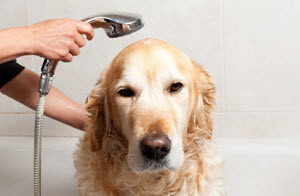 Clogging of the shower drain can be caused by short hair as much as it can become clogged by long hair. Therefore, the common misconception that women are solely responsible for hair clogs is simply not true. Even if there are no long hairs making regular trips down the drain, it is still a possibility that the drain can become clogged. In fact, pet owners who bathe their dogs at home will contribute to hair clogs as well. This is largely because of how clogged drains are formed. Oily deposits from our bodies, soaps and other sources are primarily responsible for clogging. The deposits are sticky and as such, solid particles that go down the drain could potentially become stuck. Once they get stuck, an additional surface area is created to trap even more deposits. This will create an even bigger clog.
Clogging of the shower drain can be caused by short hair as much as it can become clogged by long hair. Therefore, the common misconception that women are solely responsible for hair clogs is simply not true. Even if there are no long hairs making regular trips down the drain, it is still a possibility that the drain can become clogged. In fact, pet owners who bathe their dogs at home will contribute to hair clogs as well. This is largely because of how clogged drains are formed. Oily deposits from our bodies, soaps and other sources are primarily responsible for clogging. The deposits are sticky and as such, solid particles that go down the drain could potentially become stuck. Once they get stuck, an additional surface area is created to trap even more deposits. This will create an even bigger clog.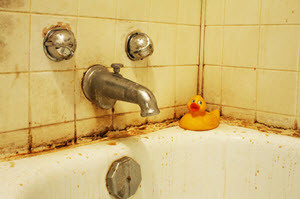 Bathroom mold and mildew is something that we all have experienced at some time or another. In homes that do not have proper ventilation in their bathroom, it is more probable to see mold and mildew growing. For those homeowners who have to constantly struggle with this issue, there are ways that you can effectively remove it. This article will discuss the causes of mildew buildup in your bathroom, how to remove it naturally with the power of vinegar, and how to prevent mildew from taking over your bathroom. For some homeowners, no matter how much they try to ventilate their bathroom after a shower, they still end up with mold buildup in their bathtub. The reason for this is because mold thrives in cold, wet, and dark places. Your bathtub is no exception. In the following article by
Bathroom mold and mildew is something that we all have experienced at some time or another. In homes that do not have proper ventilation in their bathroom, it is more probable to see mold and mildew growing. For those homeowners who have to constantly struggle with this issue, there are ways that you can effectively remove it. This article will discuss the causes of mildew buildup in your bathroom, how to remove it naturally with the power of vinegar, and how to prevent mildew from taking over your bathroom. For some homeowners, no matter how much they try to ventilate their bathroom after a shower, they still end up with mold buildup in their bathtub. The reason for this is because mold thrives in cold, wet, and dark places. Your bathtub is no exception. In the following article by